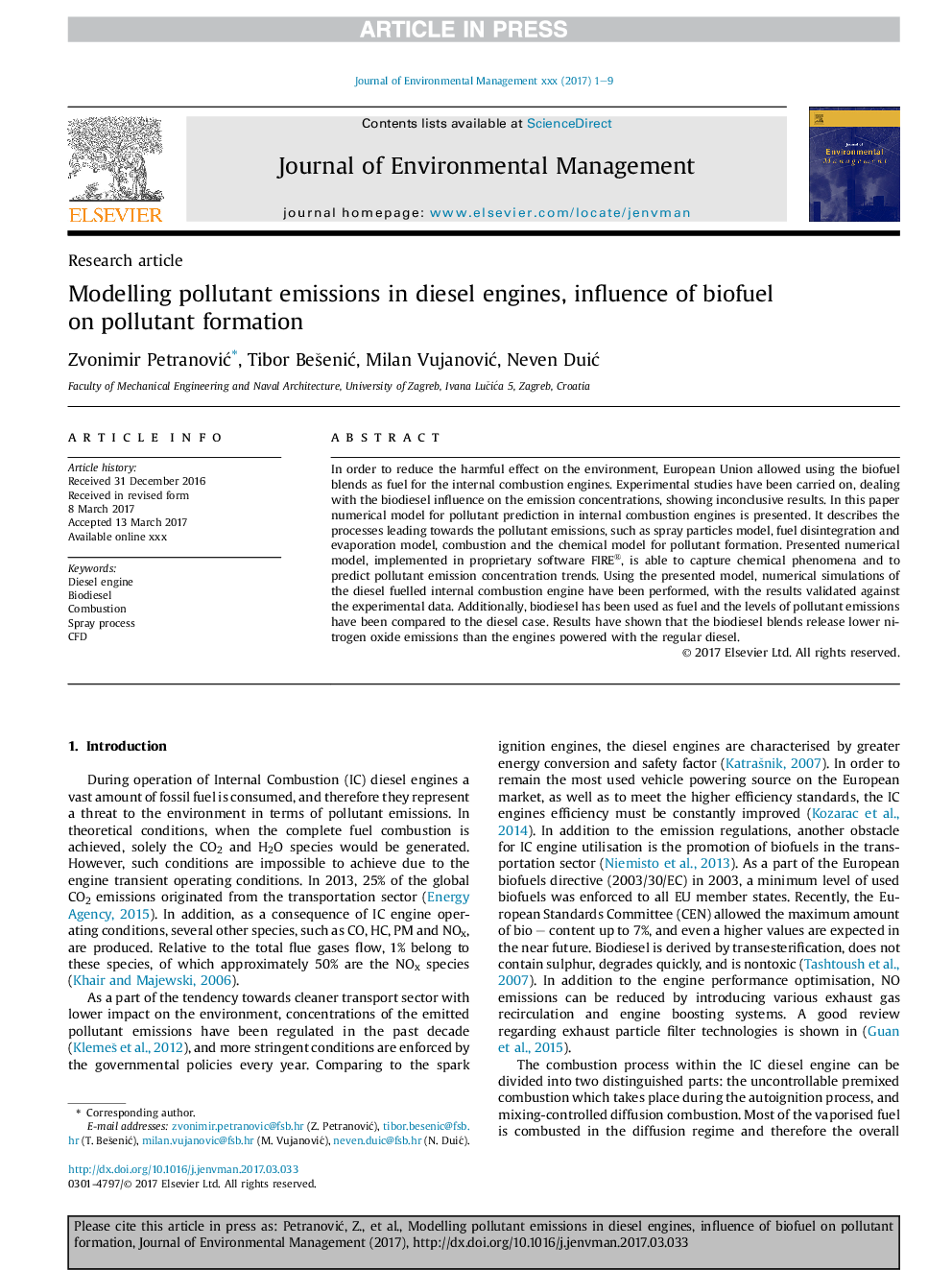| Article ID | Journal | Published Year | Pages | File Type |
|---|---|---|---|---|
| 5116382 | Journal of Environmental Management | 2017 | 9 Pages |
Abstract
In order to reduce the harmful effect on the environment, European Union allowed using the biofuel blends as fuel for the internal combustion engines. Experimental studies have been carried on, dealing with the biodiesel influence on the emission concentrations, showing inconclusive results. In this paper numerical model for pollutant prediction in internal combustion engines is presented. It describes the processes leading towards the pollutant emissions, such as spray particles model, fuel disintegration and evaporation model, combustion and the chemical model for pollutant formation. Presented numerical model, implemented in proprietary software FIRE®, is able to capture chemical phenomena and to predict pollutant emission concentration trends. Using the presented model, numerical simulations of the diesel fuelled internal combustion engine have been performed, with the results validated against the experimental data. Additionally, biodiesel has been used as fuel and the levels of pollutant emissions have been compared to the diesel case. Results have shown that the biodiesel blends release lower nitrogen oxide emissions than the engines powered with the regular diesel.
Related Topics
Physical Sciences and Engineering
Energy
Renewable Energy, Sustainability and the Environment
Authors
Zvonimir PetranoviÄ, Tibor BeÅ¡eniÄ, Milan VujanoviÄ, Neven DuiÄ,
